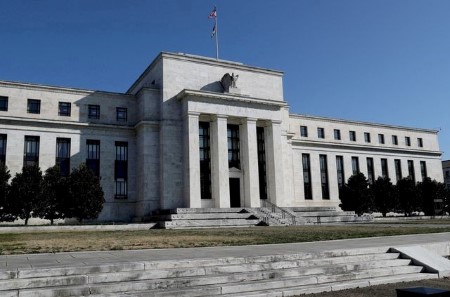




Policy Rate Updates: Double cut finale
 DOWNLOAD
DOWNLOAD

Monthly Economic Update: One for the road
 DOWNLOAD
DOWNLOAD

Inflation Update: Still low, still slow
 DOWNLOAD
DOWNLOAD


Market nerves tie US rate-setters’ hands

CHICAGO, March 22 (Reuters Breakingviews) – Federal Reserve Chair Jay Powell is well outside of his comfort zone. On Wednesday the central bank raised interest rates a quarter point. Yet two weeks ago, before a confidence crisis hit US banks, he was intimating he would jack them up even higher. As his attention bends in new ways, so must his principles.
The failure of Silicon Valley Bank nearly two weeks ago upended the US financial system, and the Fed and other agencies have had to provide a steadying hand. Prognosticators including Goldman Sachs last week changed their projections for rates because of the upheaval, expecting Powell would hold them steady. But by Wednesday morning, just before the central bank’s decision, the futures market was mostly pricing in a 25-basis point hike.
So, Powell and his rate-setting peers did what was expected. Which makes sense because any surprise would have threatened an already fragile system. Treasury yield volatility hit the highest level since 2009 last week and has only slightly eased, according to the ICE BofAML MOVE Index. Futures contracts tracking the central bank’s benchmark rate have also been shaky.
The complexity comes from the Fed’s divided mission. While the bank often talks about its “dual mandate” to stabilize prices and employment, there’s a third mandate that is often forgotten in peace times. Wall Street reforms passed in 2010 crystallized the central bank’s duty to foster a stable financial system.
Powell’s only tools are rates, and confidence. This crisis uniquely depends on the latter, and Powell tried to restore it on Wednesday by saying all deposits were safe, something he can’t actually guarantee. But his other, and blunter tool, is getting a workout too. While the Fed chair said in February that policymakers focus not on short-term market moves but “sustained changes” to financial conditions, several former Fed officials have hinted that in a crisis, following the market is the best course of action.
Rising rates played a major role in the collapse of Silicon Valley Bank two weeks ago, and the latest hike – even though it’s a small one – puts even more pressure on lenders. But with investors’ jitters at decade highs, it’s better Powell gives markets the devil they know than the devil they don’t.
CONTEXT NEWS
The US Federal Reserve raised interest rates by 25 basis points to a range of 4.75% to 5% on March 22. Investors had largely priced in such a hike, according to futures contract pricing tracked by the CME FedWatch tool.
The Dodd-Frank Wall Street Reform and Consumer Protection Act of 2010 gave the Fed new responsibilities for maintaining stability in the US financial system, including promoting consumer protection measures and fostering safety in payment systems. Those duties joined its long-standing dual mandate of 2% annual inflation and full employment.
(Editing by Lauren Silva Laughlin and Amanda Gomez)
This article originally appeared on reuters.com





 By Reuters
By Reuters